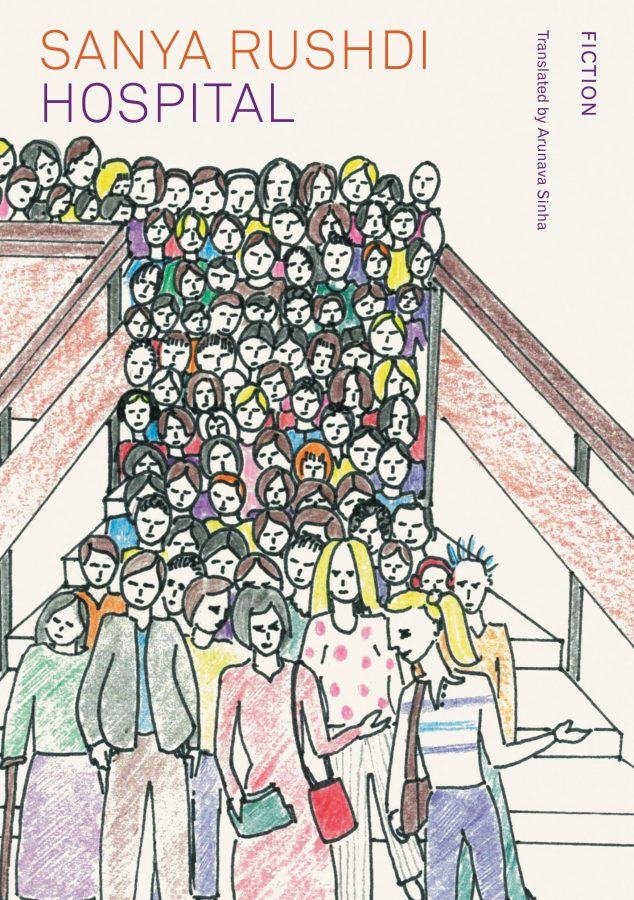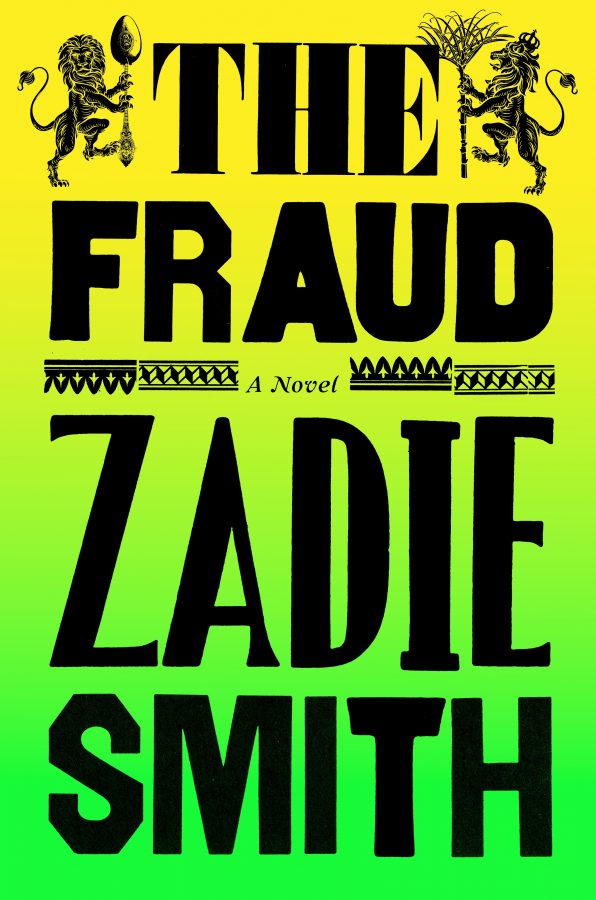There’s a point in Carrie Tiffany’s new novel, Exploded View, where the teenage narrator sits in a parked car with her mother and brother, parked in front of their ‘mission brown’ suburban house, all three people unmoving, waiting, tense. It’s a moment of stillness, but also, briefly, of possibility – ‘She could always change her mind,’ the narrator says, ‘Maybe there is someplace else for us to go?’ And as the moment stretches, tautens, becomes unbearable, the narrator escapes by imagining lifting the bonnet of the car, and beginning to disassemble its engine:
When you put your mind in the engine some of what your body is saying – about being too hot, wanting a drink, needing to cry – can be turned down for a while. The manual can be relied upon. It is the same each time you open it. The same parts, the same hands. One exploded view sits next to another. No breath. No noise. No lies.
It’s natural, in a way, that the narrator should turn to an engine and its manual for solace: she occasionally works, alongside her violent and abusive stepfather (to whom she refers as ‘father man’ across the book), in the unlicensed garage he has set up on the same block as the house. More ominously, she often sneaks out of the house at night – its windows and doors all deadlocked by father man – and into the garage, to commit small acts of sabotage on the friends’ and neighbours’ cars that are in there for repair. These acts of sabotage, though, are also acts of resistance, of self-determination, in a family and a world in which she otherwise has none. ‘I am invisible,’ she says elsewhere, ‘of less interest than a dog.’
The manual is a touchstone for the narrator, and she returns to it again and again, both in her mind, and as a physical object. And it lends a strange poetry to Exploded View at times, such as when the narrator chants through lists of the names of engine parts: ‘The front wheel and drum assembly – hub bolt, grease-retaining seal, inner bearing, drum attaching bolt, outer bearing, castellated nut’, or ‘A flange, a rim…a valve, a spindle, a pin, a bolt’. The ‘exploded view’ of the title comes from this manual too, referring to a diagram of separated parts, drawn individually but in order, so that their correct configuration can be seen.
But the manual also represents a system of knowledge, an empirical way of looking at the world, or at least one small part of it, that is rational, logical, complete. It’s a diagram and a schemata, everything accounted for and with a purpose, function, and means of repair. And it’s a system of knowledge that falls down entirely when the narrator tries to transfer it to her wider world – because a family is not an engine, where ‘everything is straight. Everything is clean’, all the parts are ‘gilded, all snug up, side by side’. The parts don’t fit together perfectly, and they don’t add up to something that runs smoothly and well.
This is a common idea across Tiffany’s novels: in Everyman’s Rules for Scientific Living, it’s the agrostologist (‘the new soil and cropping expert’) and first-time farmer Robert’s systematic belief in scientific principles for farming that falls down in the face of drought; in Mateship with Birds, Harry’s keen and constant observation of a family of magpies finally offers no firm insight into actual human family life. No system of knowledge, the novels suggest, can ever stand up to the messy and complicated realities of our lives and social worlds. We cannot tame or control the world, however much we might want to, or even need to.
Jean, the main narrator of Everyman’s Rules for Scientific Living, puts it this way, towards the end of that novel, after the farm has failed and Robert, too, seems broken by its ruin:
Where is the heart in your useless rules? The rules don’t mean anything, Robert. They just get in the way of you seeing things are they really are. They get in the way of truth.
But what makes the narrator of Exploded View different from Harry, from Robert is that her need to understand her family, to find a framework to fit them into, is far more desperate, more immediate and intense. She needs to ‘turn down’ some of what her body is saying, that is, by focusing on the rules of the manual, because hers is a body in peril and in pain. It is trauma that makes her look for understanding and control, rather than the loneliness and vague bewilderment of Harry, or the hardline determination of Robert. It is trauma that she needs to find a way to understand.
The girl who narrates Exploded View is never named, and she doesn’t speak out loud, counting instead, silently, the days she has gone without speaking. ‘There’s no need to speak,’ she states, and ‘You are only lost to others – not inside yourself.’ What results is a densely interior novel, narrated in vignettes that are rhythmic, often poetic, sparse and compressed. The narrative largely occurs in the spaces between these short sections – Tiffany is interested, here, in what cannot be directly said, in the silences and elisions that trauma enacts. (‘Father man has taken my chance to tell all the parts of my story,’ the narrator states, ‘There will always be this bit that can never be told.’) Short, declarative sentences dominate the book – commas are rare – and make the narration feel breathless, even brutal at times. And throughout it all, there’s a barely suppressed terror, a violence that’s always threatening to erupt, an ever-increasing sense of dread. This is a stylish, even style-driven, book, that is, and Tiffany’s control of its voice is masterful. It is thrilling, even exhilarating at times, to read.
One of the interesting things about the girl’s narration is its frequent slippages into second person. Often, these are moments where she is attempting to systematise the world, or design her own rules and guidelines, outside of the talismanic manual. ‘If you don’t do something fast enough you have to run or you have to pretend you have done the thing so you don’t hold everyone up,’ she states, and, ‘If you wind the window down a gust of air will enter the car and people will object.’ These moments are always delivered matter-of-factly, in keeping with the kind of accounting that they enact. But they are also moments where the girl steps outside of herself, or more accurately, adopts a position that is self-objectifying, looking in on herself from someone else’s point of view.
I’ve been fascinated with the idea of self-objectification lately, because it’s something that almost all women do, something that we learn, somehow, in adolescence, when we’re suddenly made aware of our bodies – that we have them, that who we are is somehow tied to them – in a way that (for those of us who are healthy, abled-bodied, at least) we never really have before. When we first internalise the idea of our status as objects of desire, or other, darker impulses, at a time when our own subjectivity is so chaotic and fraught. When we first start policing our bodies and our behaviour, trying to make ourselves acceptable, even invisible, silent and small.
For Tiffany’s narrator, this plays out in her swinging between acting out in reaction to the violence that father man subjects her to and imagining her own – and owned – desire. As well as her nighttime escapes and her day-time truancy from school, where she fills the time by breaking in to her neighbours’ houses (on one occasion repairing a toaster, of all things), she develops a crush on a local petrol station attendant, and, more importantly, imagines the man’s hands that are sometimes pictured alongside the diagrams in her manual as belonging to a lover:
My man’s hands model the parts in situ…My man’s hands are pale and clean. They point, touch, grasp, turn hold…In the night, my man’s hands will graze my cheeks, will reach behind my head, will grasp my neck, their hairs at the nape of my neck, not sharply so it will rip, but enough to wake the skin underneath the hair. My man will do it the way that I do it to myself.
That there’s a hint of violence in this desire seems understandable, given that violence and sex are already intertwined in this girl’s life. But these imagined, disembodied hands are nonetheless tender, and striking for all of the things they are not – they have ‘good warmth and weight,’ they ‘cause no upset to my skin’, they are ‘not old’ and they ‘don’t force a part to separate from another – they coax.’ Later, the narrator’s imagining of them becomes more graphic: ‘With this thumbs, with the very tips of his fingers, my man’s hands separate the folds to stroke the collar of the hooded pin at the centre join of me,’ she states, ‘Then he pumps its tip. In an engine this mechanism is a primer, a way of establishing a necessary flow.’ What’s striking here is not so much the animation of the manual’s illustrations of hands, but the way in which the girl herself becomes an engine – something noisy and powerful, something that instigates movement. Something that is everything that she is not allowed to be.
This interest in latent or burgeoning sexuality is also present in Tiffany’s earlier works. In Mateship With Birds, both of the children who live on the farm neighbouring Harry’s are pubescent, and it is Harry’s misguided attempts to offer some guidance to the older boy, in the form of quite explicit letters, that form the crisis of the book. In Everyman’s Rules for Scientific Living, Jean’s time on the Better Farming Train, as it travels from town to town, are marked by her curious and cautious overtones towards the male scientists working alongside her. None of these characters have any kind of knowledge or reliable advice to help them navigate this new and fraught terrain – and so they have to imagine their way into it, paying attention to the minute feelings in their bodies and glimpses of hands, of nipples, of scents, to what is happening in the natural or animal world around them. Harry puts it this way, after his neighbour Betty discovers one of his hidden letters, intended for her son Michael:
If she’d asked him why he did it, he would have said because ignorance is cruel, and perhaps because it is what a father would do.
At thirteen, Harry knew nothing. None of what he had seen in the paddocks and bush seemed applicable to men and women – or at least, not to the buttoned-up and smoothed-down men and women of his acquaintance.
Betty’s children, like Harry, like Jean, know nothing, and their ignorance is something that curtails them, leads them to make rash and poorly-judged decisions – but also to look, to collect details, to imagine. The tragedy of Exploded View, however, is that the narrator knows too much, and it is only in imagining that she can find gentleness, warmth, and any kind of agency at all.
Caught up in the narrator’s continual schematising of the world is a series of delineations and rules about gender. This is, of course, part of her process of self-objectification, a consideration of the social and familial pressures and assumptions to which her changing body is subject, and it also, inevitably, has to do with power. Women, in the narrator’s understanding, are amorphous, shapeless (‘You can’t draw a chalk line around a body when it’s wearing a skirt. Some of the lines won’t be true’), unimportant (‘Nobody waits for a girl’). They clean (‘My mother is having a tidy-up. This is what mothers do.’), they go shopping (‘It’s what us girls and women do’), they carry handbags and purses, and their tools are not in the workshop, but the kitchen. And they perform their gender, their selves, deferential and aware that they are being watched: ‘The girls and women,’ the narrator states ‘…know always to wait for the men and boys to get their speaking done first,’ and ‘Girls get to play parts too, but their costumes are not for science or the skills of life; they are for men to put their eyes on.’
Men and boys are described less often; instead their presence, and their barely-suppressed violence permeate the book. Father man delights in small cruelties and indignities – making the narrator lie in the dirt and serve as a measuring stick while fencing, trying to put the mother’s finger into a cockatoo’s cage, tyrannising the whole family during the long road trip that is the main narrative event of the book. Men and don’t need to be described and delineated here. They don’t need a set of rules to contain them. They are the rules, and the narrator has to fit her worldview around them. ‘A problem for girls,’ she states, ‘is you are often afraid and it always shows on your face.’
But one of the compelling things about the narrator’s attempts to understand gender, and how it operates within her family, is how often her descriptions centre on smallness. This too has to do with power, of course – because smallness is, in a sense, a physical vulnerability, but it is also a part of her growing awareness of her body. There’s a strange doubleness at play: many of the early descriptions of size look back to ‘when I was small’, or to ‘the time before’ – before puberty, before father man – but they always do so with an eye to the present: remembering being able to break into a neighbour’s house by removing three row of glass louvres from the back window, rather than the four that are necessary now, or recalling a childhood belief that the letterbox ‘was a miniature version of the house it fronted,’ and remaining unembarrassed by this, because ‘children are small. They have small thoughts.’ The image of this letterbox carries the narrator’s need for schematics and control: ‘because the letterbox was small,’ she states, ‘everything that happened in it,’ in its imagined, scaled-down version of the house, that is, ‘could be measured and contained.’ It is determinate, predictable, and safe – the exact opposite of the house it stands before, and the violence and tyranny that erupt there.
But even now, after what the narrator calls ‘the time before’, imagining smallness is also a defense. During the family’s road trip, those long, monotonous days of silence and strain, she states:
When you see a knife-beaked bird, like a kookaburra, think of it inside an egg. It will sweeten you to imagine the bird as a chick, cramped and scruffy-feathered in its tight white egg. When you see a man, think of a baby in its snug blue blanket. When you see a snake, think of a pink worm in wet soil.
This approach to danger – to think backwards, to shrink powerful things back to their own time before, their own youth and vulnerability – is a kind of solace, of apprehending the threat and menace that are always present in the narrator’s life. But it’s also a way of imagining power – part of the narrator’s schematic is a hierarchy of hurt, whereby the large always has power over the small. ‘A large person,’ she states, ‘never hurts a larger person. A large person will hurt a smaller person, or an animal, because it is permitted for them to do so.’ In this sense, the narrator is not only imagining the knife-beaked bird, the man, the snake, as small and helpless, but herself as suddenly larger, stronger, and in control.
Because here’s the other thing about smallness, in this schematic – ‘in any machine, the smallest part is often where the break occurs.’
In the machine of this family, that is, the smallest child, this girl, is most likely to break under the strain of its poorly-calibrated operation.
The narrator’s interest in smallness is also implicated in her silence, because both are a kind of shrinking a way, a withdrawal into the interior, and they’re both, in her mind, a kind of brokenness. ‘Words,’ she says, ‘are made in the head and sent down to the throat for speaking…Except when a part is broken and the words go around and around inside instead.’ In this sense, it’s logical that the narrator’s rebellion too takes the form of breaking machines, removing small parts, like tiny screws, walking to the tip, a place of broken things and refuse, and all under the cover of night, when a small person can be almost invisible. Because this is how the narrator exists within her family: hardly seen, never heard, and convinced that the fault is hers.
What’s most remarkable about Exploded View, though, is its tension: very little actually happens, and even less is said, because it is a book about inertia, about silence. About the fierce interiority of adolescence and what is unspeakable in trauma and in violence. It is a book of taut and humming energy, of ever-increasing dread; and full of the confusion and blind terror that results when the manuals fail us.
Works Cited
Carrie Tiffany, Everyman’s Rules for Scientific Living, Picador, 2005.
Carrie Tiffany, Mateship with Birds, Picador, 2012.





